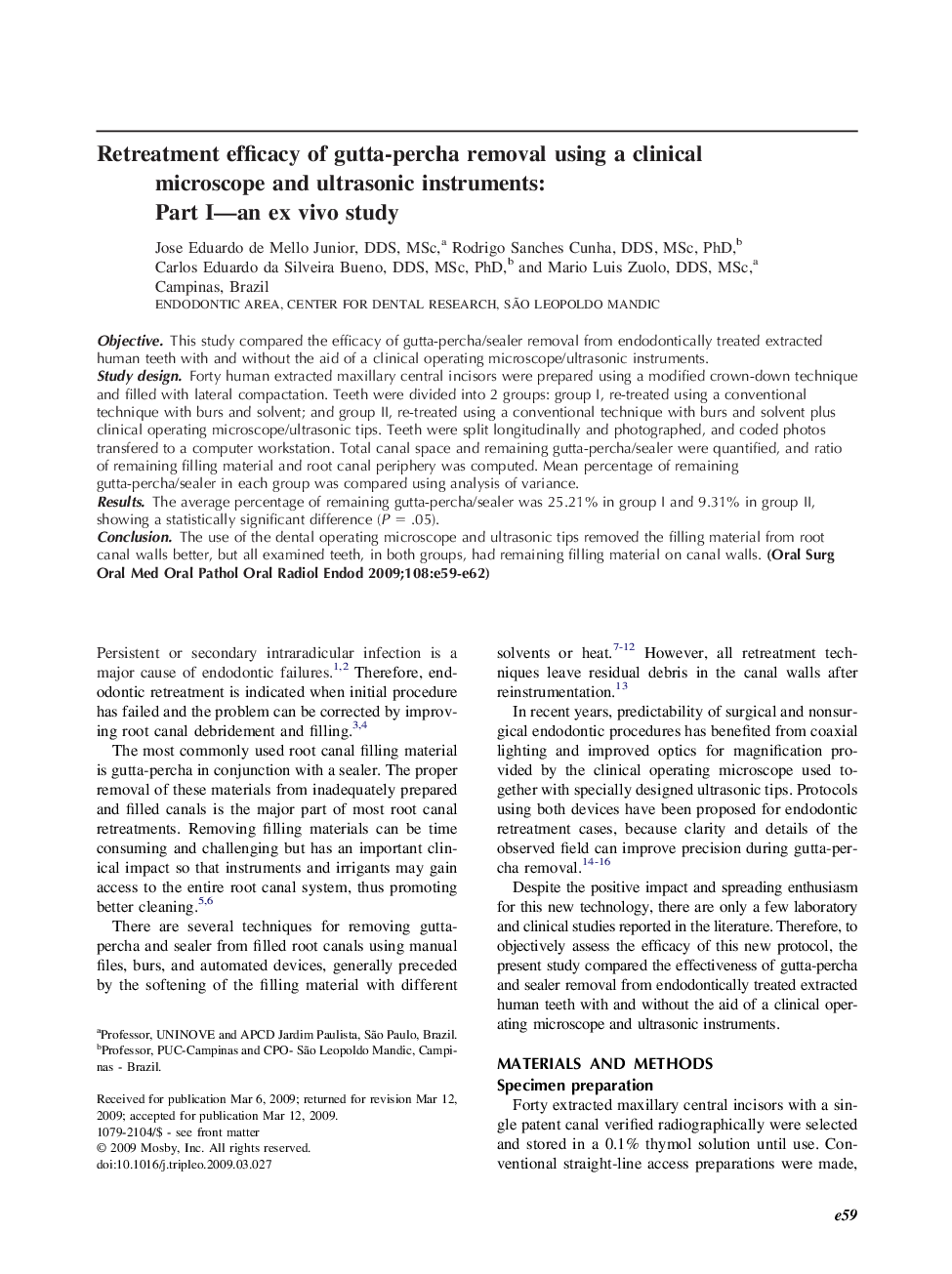| Article ID | Journal | Published Year | Pages | File Type |
|---|---|---|---|---|
| 3168207 | Oral Surgery, Oral Medicine, Oral Pathology, Oral Radiology, and Endodontology | 2009 | 4 Pages |
ObjectiveThis study compared the efficacy of gutta-percha/sealer removal from endodontically treated extracted human teeth with and without the aid of a clinical operating microscope/ultrasonic instruments.Study designForty human extracted maxillary central incisors were prepared using a modified crown-down technique and filled with lateral compactation. Teeth were divided into 2 groups: group I, re-treated using a conventional technique with burs and solvent; and group II, re-treated using a conventional technique with burs and solvent plus clinical operating microscope/ultrasonic tips. Teeth were split longitudinally and photographed, and coded photos transfered to a computer workstation. Total canal space and remaining gutta-percha/sealer were quantified, and ratio of remaining filling material and root canal periphery was computed. Mean percentage of remaining gutta-percha/sealer in each group was compared using analysis of variance.ResultsThe average percentage of remaining gutta-percha/sealer was 25.21% in group I and 9.31% in group II, showing a statistically significant difference (P = .05).ConclusionThe use of the dental operating microscope and ultrasonic tips removed the filling material from root canal walls better, but all examined teeth, in both groups, had remaining filling material on canal walls.
